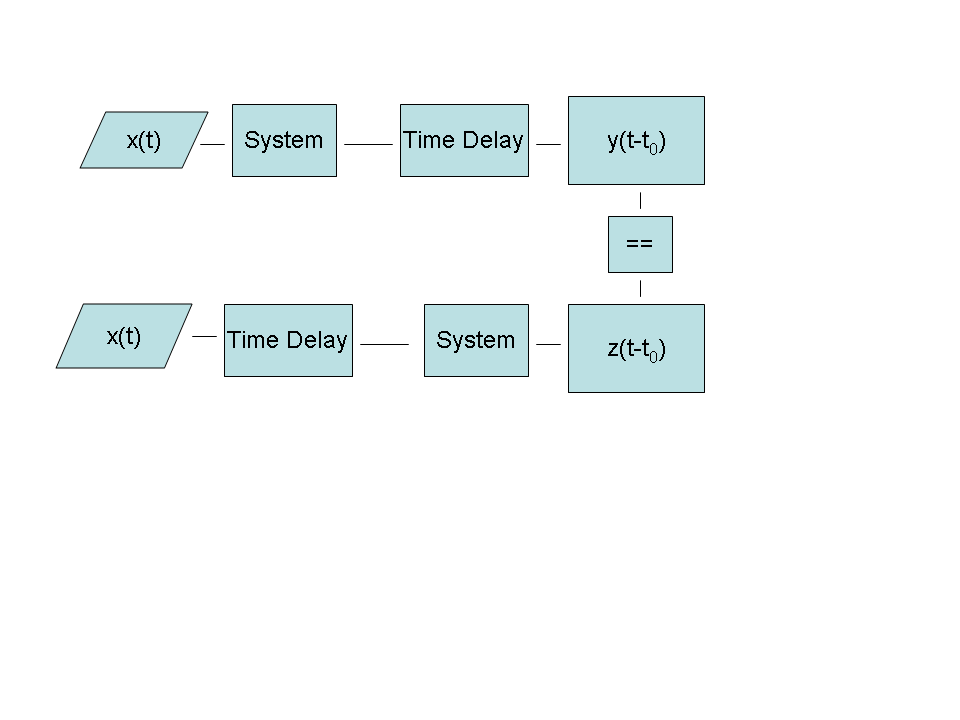(New page: A system is Time Invariant if: Image:TIimg.png) |
(→Examples) |
||
| (One intermediate revision by the same user not shown) | |||
| Line 2: | Line 2: | ||
[[Image:TIimg_ECE301Fall2008mboutin.png]] | [[Image:TIimg_ECE301Fall2008mboutin.png]] | ||
| + | |||
| + | ==Examples== | ||
| + | |||
| + | Time-Invariant System | ||
| + | |||
| + | <pre> | ||
| + | y = 2x(t) | ||
| + | |||
| + | x1(t) -> x1(t-t0) -System-> 2x1(t-t0) | ||
| + | |||
| + | x2(t) -System-> 2x2(t) -> 2x2(t-t0) | ||
| + | |||
| + | Therefore, this system is Time Invariant | ||
| + | </pre> | ||
| + | |||
| + | |||
| + | Time-Variant System | ||
| + | |||
| + | <pre> | ||
| + | y = x(2t) | ||
| + | |||
| + | x1(t) -> x1(t-t0) -System-> x1(2t-t0) | ||
| + | |||
| + | x2(t) -System-> x2(2t) -> x2(2(t-t0)) | ||
| + | |||
| + | Therefore, this system is Time Variant because the outputs do not match. | ||
| + | </pre> | ||
Latest revision as of 11:28, 11 September 2008
A system is Time Invariant if:
Examples
Time-Invariant System
y = 2x(t) x1(t) -> x1(t-t0) -System-> 2x1(t-t0) x2(t) -System-> 2x2(t) -> 2x2(t-t0) Therefore, this system is Time Invariant
Time-Variant System
y = x(2t) x1(t) -> x1(t-t0) -System-> x1(2t-t0) x2(t) -System-> x2(2t) -> x2(2(t-t0)) Therefore, this system is Time Variant because the outputs do not match.


